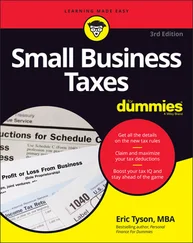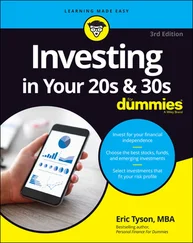Retirement accounts should be called “tax-reduction accounts” — if they were, more people would be more motivated to contribute to them. Contributions to these plans are generally deductible for both your federal and state income taxes. Suppose that you pay about 30 percent between federal and state income taxes on your last dollars of income. (See the section “ Figuring out your tax bracket” later in this chapter.) With most of the retirement accounts that I describe in this chapter, you can save yourself about $300 in taxes for every $1,000 that you contribute in the year that you make your contribution.
After your money is in a retirement account, any interest, dividends, and appreciation grow inside the account without taxation. With most retirement accounts, you defer taxes on all the accumulating gains and profits until you withdraw your money down the road, which you can do without penalty after age 59½. In the meantime, more of your money works for you over a long period of time. In some cases, such as with the Roth IRAs described later in this chapter, withdrawals are tax-free, too.
The good old U.S. government now provides a tax credit for lower-income earners who contribute up to $2,000 into retirement accounts. The maximum credit of 50 percent applies to the first $2,000 contributed for single taxpayers with an adjusted gross income (AGI) of no more than $19,500 and married couples filing jointly with an AGI of $39,000 or less (these income ranges are for tax year 2020). Singles with an AGI of between $19,500 and $21,250 and married couples with an AGI between $39,000 and $42,500 are eligible for a 20 percent tax credit. Single taxpayers with an AGI of more than $21,250 but no more than $32,500 and married couples with an AGI between $42,500 and $65,000 can get a 10 percent tax credit. This credit is claimed on IRS Form 8880, “Credit for Qualified Retirement Savings Contributions.”
Starting your savings sooner
 Many investors make a common mistake by neglecting to take advantage of retirement accounts because of their enthusiasm to spend or invest in non-retirement accounts. Not investing in tax-sheltered retirement accounts can cost you hundreds, perhaps thousands, of dollars per year in lost tax savings. Add up that loss over the many years that you work and save, and you find that not taking advantage of these tax-reduction accounts can easily cost you tens of thousands to hundreds of thousands of dollars in the long term. Ouch!
Many investors make a common mistake by neglecting to take advantage of retirement accounts because of their enthusiasm to spend or invest in non-retirement accounts. Not investing in tax-sheltered retirement accounts can cost you hundreds, perhaps thousands, of dollars per year in lost tax savings. Add up that loss over the many years that you work and save, and you find that not taking advantage of these tax-reduction accounts can easily cost you tens of thousands to hundreds of thousands of dollars in the long term. Ouch!
To take advantage of retirement savings plans and the tax savings that accompany them, you must first spend less than you earn. Only then can you afford to contribute to these retirement savings plans (unless you already happen to have a stash of cash from previous savings or inheritance).
 The sooner you start to save, the less painful it is each year to save enough to reach your goals. Why? Because your contributions have more years to compound.
The sooner you start to save, the less painful it is each year to save enough to reach your goals. Why? Because your contributions have more years to compound.
BROADENING STOCK OWNERSHIP WITH SOCIAL SECURITY CHOICE
Many Americans (by some estimates around 40 percent) don’t own stock. That’s unfortunate because stock ownership is one of the best proven long-term methods for folks of all means to build wealth over the long term. Average annual stock returns in the U.S. have been above 9 percent. That may not sound like a lot, but stocks returning that average yearly rate (combined with the magical powers of compounding) would double in value every 8 years without any newly added capital. (Anyone can achieve these solid long-term returns through regular buying and holding of a broadly diversified stock index fund, which tracks a broad stock market average.)
There’s a simple and powerful way to broaden stock ownership to include virtually all households, especially and including folks working at low and moderate pay jobs. My idea for change is that the U.S. Social Security system could be modified so that workers can elect to have a portion of the large amount of money they are paying into the system be invested in a highly diversified portfolio of stocks. What I am suggesting would be voluntary for workers and for just a portion of their payments going into Social Security. And, simple safeguards would ensure that investors couldn’t do risky things that caused them to lose most or all their money.
This is a case where other countries are ahead of us. Both Japan and the United Kingdom have systems that allow for workers to voluntarily invest a portion of the government retirement taxes into individual investment accounts. Chile, Mexico, and Sweden have mandatory plans.
Working folks are paying a lot into the current U.S. Social Security system. For people who work for an employer, the employer withholds Social Security taxes of 7.65 percent of a worker’s pay and then adds to that another 7.65 percent (out of their own coffers) for a total of 15.3 percent of the worker’s compensation. Of that amount, 2.9 percent is earmarked for Medicare — the federal government health insurance program for people age 65 and older. The remaining 12.4 percent goes toward Social Security. So, for a worker being paid $50,000 per year, that amounts to $6,200 that gets sent to the federal government and used for the Social Security system.
Given that the bottom 41 percent of workers pay no federal income tax, it’s safe to say that most American workers pay more in Social Security taxes than they do in federal income taxes. The vast majority of those Social Security tax payments (81 percent) go to funding the most well-known Social Security (“old age”) program, which pays monthly retirement income benefits just like an old-style employer pension plan based upon years of service. Think of the Social Security retirement income benefits program as a forced savings plan because that’s what it really is.
Far smaller amounts of your Social Security taxes (the remaining 19 percent) go toward survivor benefits and disability payments. The overall program’s acronym is “OASDI,” which stands for the three programs: Old-Age, Survivors, and Disability Insurance.
So, returning to our example of the worker earning $50,000 per year, he and his employer are paying about $5,022 into the Social Security retirement/pension program. Imagine if just half of this money (say $2,500 per year in today’s dollars) could be invested in a highly diversified, low-cost U.S. stock market index fund — such as Vanguard’s Total Stock Market Index fund, which invests in thousands of U.S. publicly traded companies of all sizes. (The institutional share class of this fund, which the non-profit Vanguard provides on an at-cost basis, has a management fee of just 0.02 percent per year, which translates into just $2 per $10,000 managed!)
I call this new program Social Security Choice because it would give workers an actual choice. Invested money would remain in this diversified U.S. stock fund during a worker’s decades of employment. The federal government Social Security program began in 1935 during the depths of the Great Depression and ultra-low-cost mutual funds and the technology to facilitate everyone’s investment in such a vehicle didn’t exist back then.
Over a 45-year working career, this worker’s stock-fund invested Social Security money would have grown to more than one million dollars — $1,377,870 assuming an average annual rate of return of 9 percent. Of that, just $112,500 is the amount paid in by the worker, and the vast remainder, more than $1,265,300, represents the investment returns!
Читать дальше

 Many investors make a common mistake by neglecting to take advantage of retirement accounts because of their enthusiasm to spend or invest in non-retirement accounts. Not investing in tax-sheltered retirement accounts can cost you hundreds, perhaps thousands, of dollars per year in lost tax savings. Add up that loss over the many years that you work and save, and you find that not taking advantage of these tax-reduction accounts can easily cost you tens of thousands to hundreds of thousands of dollars in the long term. Ouch!
Many investors make a common mistake by neglecting to take advantage of retirement accounts because of their enthusiasm to spend or invest in non-retirement accounts. Not investing in tax-sheltered retirement accounts can cost you hundreds, perhaps thousands, of dollars per year in lost tax savings. Add up that loss over the many years that you work and save, and you find that not taking advantage of these tax-reduction accounts can easily cost you tens of thousands to hundreds of thousands of dollars in the long term. Ouch! The sooner you start to save, the less painful it is each year to save enough to reach your goals. Why? Because your contributions have more years to compound.
The sooner you start to save, the less painful it is each year to save enough to reach your goals. Why? Because your contributions have more years to compound.










